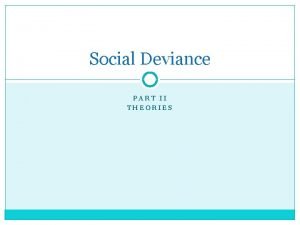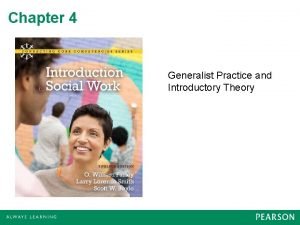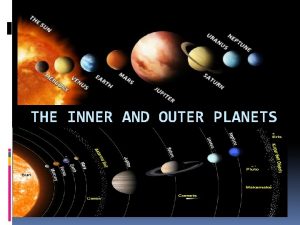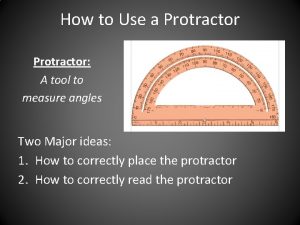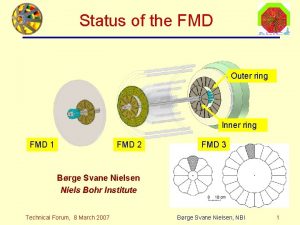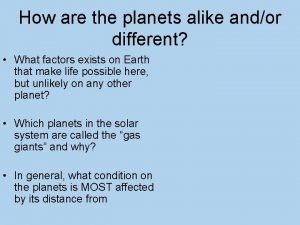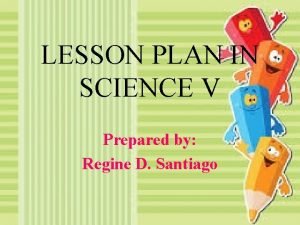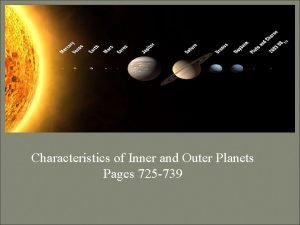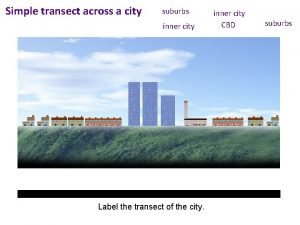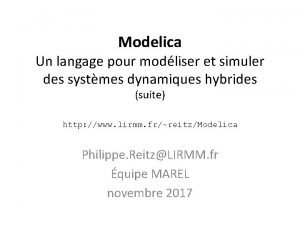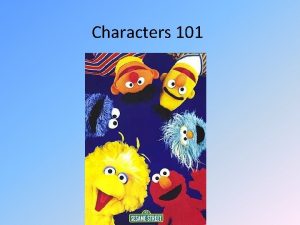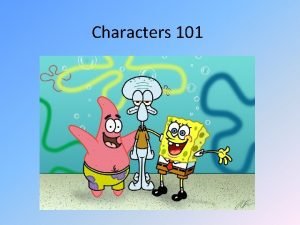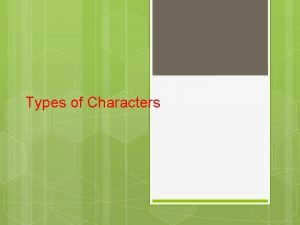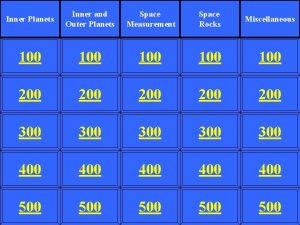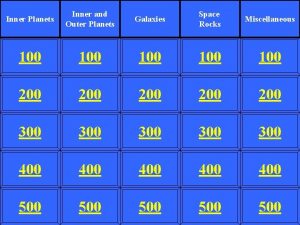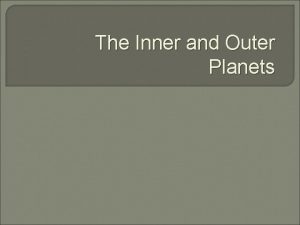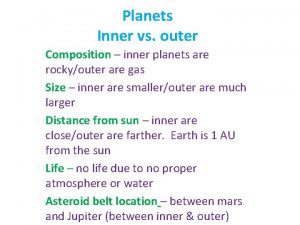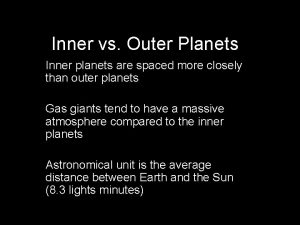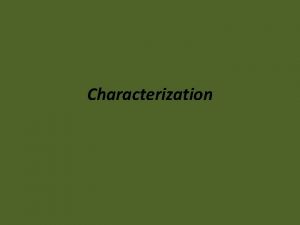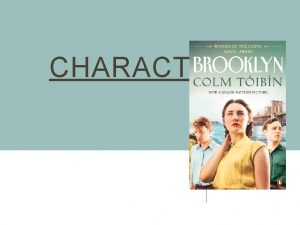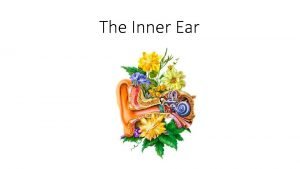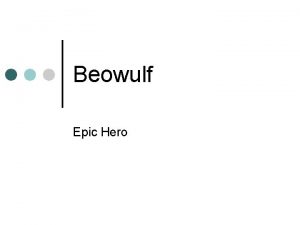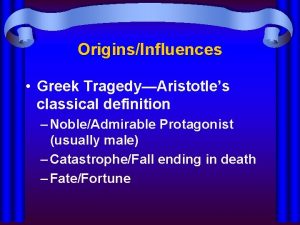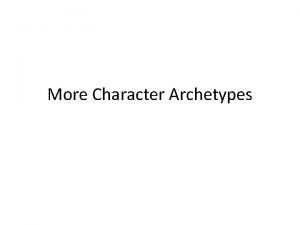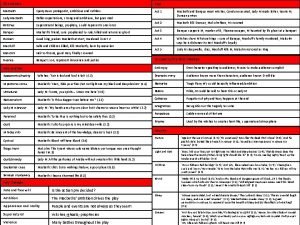CHARACTERS CHARACTERS Protagonist Usually hero Outer and inner

























- Slides: 25

CHARACTERS

CHARACTERS � Protagonist � Usually hero � Outer and inner problems Servant � Pet � � Antagonist Sidekick � � NPCs Merchant � Trainer � Quest giver � Higher self �

CHARACTER ROLES � Higher self Ø � � Meant to aid the hero Shadow Ø Ultimate evil Threshold guardian Ø Progress delayer Teaches the hero Ally Ø Hero as he aspires to be Mentor Ø Trickster Ø Mischief maker Herald Ø Used to facilitate change in the story

CHARACTER GROWTH � Must include growth to have a meaningful story � Growth varies by genre � Must decide: � Which characters will grow � How they will grow � Implementation in game � Affect on gameplay � Representation to player

CHARACTER GROWTH

GOALS OF CHARACTER DESIGN � Enhance story � Emotional response � Characters to identify with and care about � Credible within the game style

GOALS OF CHARACTER DESIGN � Create characters that people … find intriguing (even if a villain) can believe in can identify with � Distinctive enough to be memorable

PLAYER-DESIGNED AVATARS � Flexibility differs by genre � Role-playing games usually greatest � Race, sex, hair, physical attributes, etc. � Typically no personality but what is created � Goal is tools for players to create themselves

NONSPECIFIC AVATARS � Designer doesn’t specify anything � Text-based adventure games � Allows very tight connection between player and avatar � Half-Life’s � Limiting Gordon Freeman for designer

SPECIFIC AVATARS � Goals � Personality of their own � Belong in the game � Begins with visual depiction � Player’s relationship more complex � Identify with, not become

SEMI-SPECIFIC AVATARS � Only partially characterized � Better to make cartoonish � Common with action game avatars � Mario � Lara Croft � “Beyond the bare facts of her biography, her perfect vacuity means we can make Lara Croft into whoever we want her to be. ” – Steven Pool, “Lara’s Story”

CONTROLLING AVATARS � Indirect (“point and click”) � Doesn’t steer avatar, points to where to go. Player as disembodied guide friend � More likely specific avatar � Direct � Player steers avatar through game world, doing a variety of actions as necessary � More likely nonspecific or semi-specific

DESIGNING THE AVATAR � Nonspecific, � Visual, � Direct � Goal: semi-specific or specific psychological, social or indirect control character the player can identify with qualities can appreciate

ART-DRIVEN CHARACTER DESIGN � Creating a character by first thinking about his visual appearance � Visual design � Character physical types � Physical design � Defining attributes � Sidekicks

VISUAL DESIGN � Realism doesn’t matter, selfconsistency does � Pac-Man � Lara Croft � Purely artistic characters tend to be more superficial and one-dimensional � Lets the player impose his own personality

CHARACTER PHYSICAL TYPES � Humanoids � Non-humanoids � Hybrids

PHYSICAL DESIGN � Methods to attract › › � Cartoonlike qualities › � Hypersexualization Cuteness Cool, tough, cute, goofy Culture differences in art styles › Japanese: large eyes and tiny/huge mouths � Cute › faces with sexually provocative women European: often ugly and strange to Americans

DEFINING ATTRIBUTES � Clothing, weapons, symbolic objects, name � Color palette reflects character’s attitudes or emotional temperament � Superman, upholder of “truth, justice, and the American way”: bright/cheery, American flag � Batman, Dark Knight of Gotham City (grittier, more run-down than Metropolis): somber

SIDEKICKS � Most prominent common element in game design � Combine qualities (e. g. , tough with cute) to provide variety and comic relief � Benefits � Give player additional moves and actions � Extend emotional range of game � Can give player information they couldn’t get otherwise

STORY-DRIVEN CHARACTER DESIGN � Starting with the story behind the character and developing his traits and personality before considering his appearance Character dimensionality � Language & accent � Developing believable characters � Character growth � Character archetypes �

CHARACTER DIMENSIONALITY � Zero-dimensional › � One-dimensional › � Have only a single variable to characterize a changing feeling or attitude Two-dimensional › � May display only discrete emotional states Have multiple non-conflicting variables that express their impulses Three-dimensional › Have multiple emotional states that can produce conflicting impulses

LANGUAGE & ACCENT � Key cue to character’s personality › › › � Vocabulary – age, social class, education Grammar and sentence construction – education and class Accent – place of origin and social class Delivery (speed and tone) – excitement, boredom, anxiety, suspicion, attitude or emotional state Vocal quirks – distinguishing Sound effects also tell about personality › › › Confirm player’s command Signal injury, damage, death Pitch describes

BELIEVABLE CHARACTERS � Major characters need rich personalities › Answer many questions about them � Where was he born? � What is his education? � What are his favorite activities? � What were his biggest triumphs in life? � What are his interesting or important possessions? � etc. › Show through appearance, language, and behavior

BELIEVABLE CHARACTERS � Attributes – location, health, relationships, etc. � Can change as the player plays the game � Status attributes: change frequently and by large amounts � Characterization attributes: change infrequently and only by small amounts or not at all

BELIEVABLE CHARACTERS � Three golden guidelines to developing effective, believable characters � Needs to intrigue the player � Needs to get the player to like him � Needs to change and grow according to experience
 Inner critic and inner defender
Inner critic and inner defender Characteristic of mars
Characteristic of mars Inner core and outer core
Inner core and outer core Earth mantle definition
Earth mantle definition Inner and outer controls work against deviance
Inner and outer controls work against deviance Which seismic waves stay on earth's surface
Which seismic waves stay on earth's surface Inner and outer sphere mechanism
Inner and outer sphere mechanism Inner and outer forces
Inner and outer forces What separates the inner and outer planets
What separates the inner and outer planets My very excited mother just
My very excited mother just What separates the inner planets and outer planets
What separates the inner planets and outer planets Beauty by charlene
Beauty by charlene Inner cone of bunsen flame
Inner cone of bunsen flame Proper protractor orientation
Proper protractor orientation Outer scale protractor
Outer scale protractor What separates the inner planets and outer planets
What separates the inner planets and outer planets Inner ring and outer ring
Inner ring and outer ring Inner terrestrial planets
Inner terrestrial planets How are the inner and outer planets alike?
How are the inner and outer planets alike? Inner critic and inner defender
Inner critic and inner defender Inner outer planets venn diagram
Inner outer planets venn diagram What are the 3 main layers of the earth? *
What are the 3 main layers of the earth? * Characteristics of jupiter planet
Characteristics of jupiter planet Inner city suburbs
Inner city suburbs Langage modelica
Langage modelica Socratic seminar ground rules
Socratic seminar ground rules




